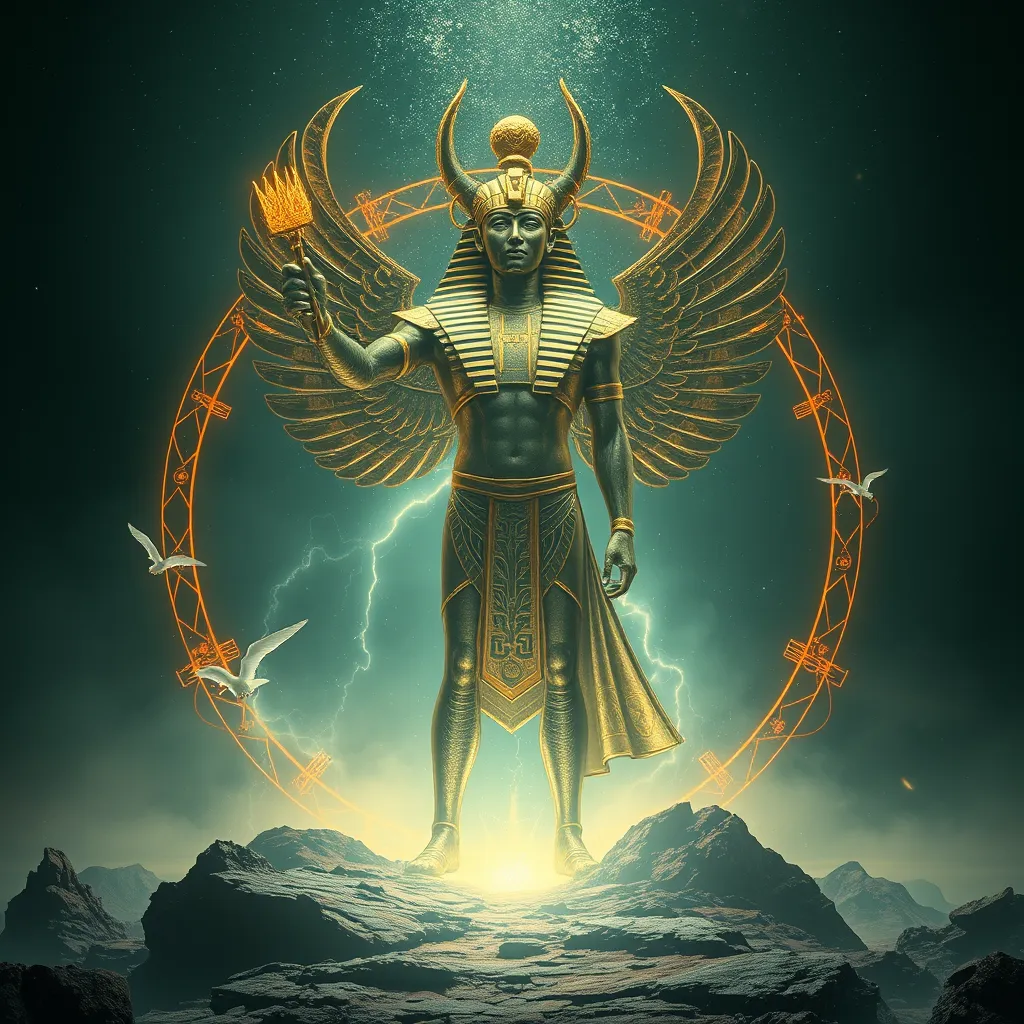The Myth of the Creation: Atum, the Self-Created God and the Origin of Everything
I. Introduction
Creation myths serve as foundational narratives across cultures, offering insights into how societies understand their origins, the universe, and their place within it. Among these captivating tales, Atum stands out as a central figure in Egyptian mythology, representing self-creation and the inception of all that exists. This article aims to explore Atum’s pivotal role in the creation myth of ancient Egypt and the broader implications of self-creation in the human experience.
II. The Context of Egyptian Mythology
The ancient Egyptian belief system was complex and multifaceted, encompassing a pantheon of gods, elaborate rituals, and a rich tapestry of myths. Egyptian mythology served not only as a means of explaining the cosmos but also as a guide for moral conduct and societal norms.
- Historical Significance: Egyptian myths were integral to daily life and governance, influencing everything from agriculture to the pharaoh’s divine right to rule.
- Creation Myths: These narratives often reflected the Egyptians’ understanding of the natural world, the cycle of life and death, and the afterlife.
- Themes and Symbols: Key themes in Egyptian mythology include duality, order versus chaos, and the interplay between life and death.
III. Atum: The Self-Created God
Atum is often depicted as a figure who embodies the concept of self-creation, a profound notion that raises philosophical questions about existence and origin.
- Characteristics: Atum is typically represented as a man, sometimes with the head of a serpent or a ram, signifying his connection to the primordial and the divine.
- Self-Creation: Atum’s emergence from the chaotic waters of Nun symbolizes the act of creation without external influence, a powerful metaphor for autonomy and self-determination.
- Comparative Analysis: Similarities can be drawn between Atum and other deities, such as the Greek god Chaos or the Hindu god Brahma, who also represent creation from nothingness.
IV. The Creation Story of Atum
The narrative of Atum’s creation is vivid and rich with symbolism. Atum is said to have emerged from the primordial waters of Nun, the abyss that existed before creation.
- Emergence: Atum’s rise from Nun marked the beginning of the world, as he brought forth light and life.
- Creation of Other Gods: Atum created other deities, including Shu (air) and Tefnut (moisture), through a process of self-replication, demonstrating his dual nature as both male and female.
- Significance of Duality: This duality highlights the interconnectedness of existence and the balance between masculine and feminine forces in the universe.
V. Atum’s Role in the Egyptian Pantheon
Within the Egyptian pantheon, Atum held a significant position, especially in the context of the Heliopolitan creation myth.
- Relationships with Other Deities: Atum was often associated with Ra, the sun god, and Osiris, the god of the afterlife, emphasizing his role as a creator and sustainer of life.
- Heliopolitan Myth: In Heliopolis, Atum was revered as the first god, laying the groundwork for subsequent creation myths and religious practices.
- Cosmological Influence: Atum’s narrative shaped Egyptian cosmology, influencing beliefs about the cycle of life, death, and rebirth.
VI. Symbolism and Iconography of Atum
Atum’s representation in ancient Egyptian art and symbolism is rich and diverse, reflecting his significance in the mythological framework.
- Common Symbols: Atum is often associated with the setting sun, symbolizing the end of the day and the cyclical nature of time, as well as the serpent, representing wisdom and eternity.
- Artistic Representations: In ancient artifacts, Atum is depicted in various forms, from human figures to symbolic representations, conveying his multifaceted nature.
- Modern Interpretations: Atum’s symbolism continues to inspire contemporary art and literature, resonating with themes of creation, identity, and existence.
VII. The Legacy of Atum in Contemporary Culture
Atum’s influence extends beyond ancient mythology, impacting modern interpretations of creation and identity.
- Modern Interpretations: Atum’s story has found resonance in discussions about self-creation and individuality, prompting reflections on personal agency and the nature of existence.
- Contemporary Relevance: In popular culture, Atum can be compared to figures that embody self-creation and autonomy, such as superheroes or mythological figures reimagined in modern narratives.
- Legacy of Creation Myths: The enduring nature of creation myths, including Atum’s, showcases the universal human quest for understanding our origins and purpose.
VIII. Conclusion
Atum’s significance in Egyptian mythology cannot be overstated; he represents the essence of self-creation and the origin of everything. His story illustrates the profound nature of creation myths and their impact on human understanding of existence and identity. As we reflect on Atum’s legacy, we recognize the universality of these narratives, which continue to shape our perspectives on life, creation, and the intricate web of connections that define our reality.




